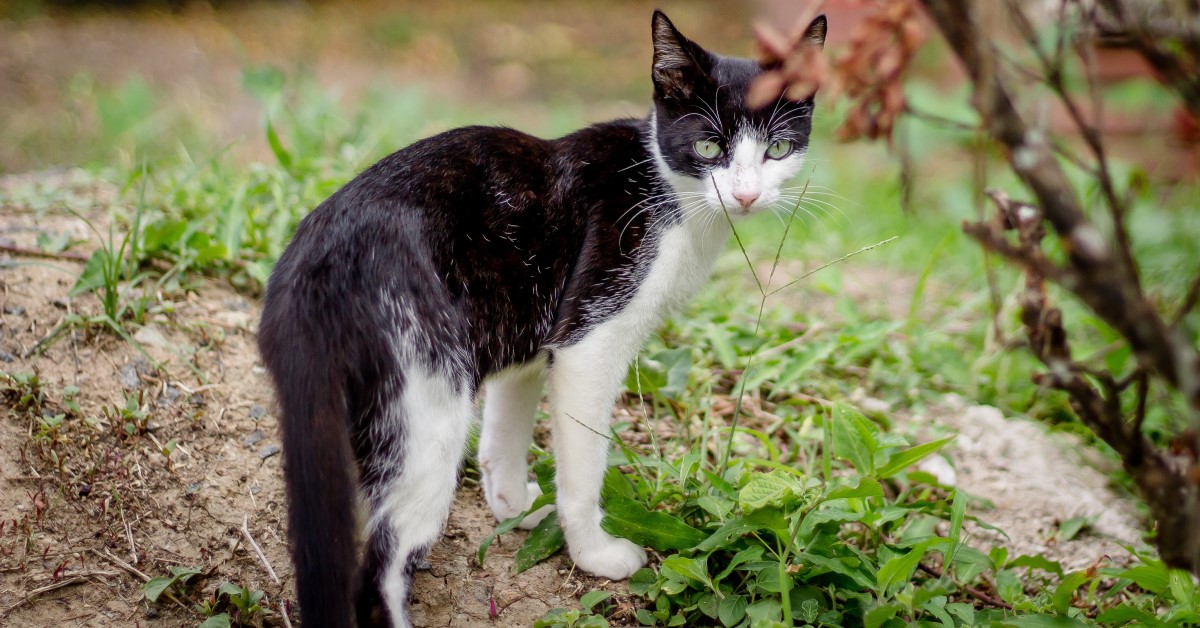What You Should Know Before Adopting a Feral Cat
With a little care, patience, and planning, you can turn a feral cat into a family pet.

If a mysterious, somewhat ragged-looking kitty has been sitting in your driveway, lurking in the bushes, or wandering in and out of your yard, you're in good company in more ways than one. Millions of feral cats inhabit the fringes of human society. As accustomed to their environment as these wild animals may seem, you may feel a strong urge to turn that feral cat into a member of your household. If you really want to accept this challenge, you need to learn some essential tips and tricks for adopting a feral cat.
Feral Cats vs. Stray Cats
Not every cat you happen to see in the wild is feral. Many stray cats run away from home after living for years as domesticated animals. While they may have "gone native" to some extent, they can still feel comfortable around humans and readjust readily to domestic conditions. Of course, if you do find a stray cat, you should check for a tag or microchip to see whether the kitty can be reunited with its owner before claiming it as your own.
By contrast, feral cats have most likely lived their entire lives outdoors, never having learned to trust or interact with humans. If you meet a feline that crouches, holds its tail in front of its body, and refuses to meow and purr in your presence, you've probably found a feral cat instead of a stray cat.
Essential Tools and Supplies
If you plan on letting a feral cat stay in your home, purchase a sufficiently roomy cage for it, lining the cage with comfortable, clean bedding. Place this cage in a room that only you regularly visit to isolate the feral cat from curious kids and pets. Other essentials for your feral feline include food, a food bowl, a water bowl, a litter box filled with kitty litter, and a cat tree that doubles as a scratching post.
Making Friends With a Feral Cat
Feral cats have been conditioned to look out for themselves in tough conditions, so you may need to work at earning your cat's trust. Food makes a good initial motivator. Leave a bowl of food in your yard for a few days while you're out of the house, then start leaving the food out while you're at home. If you have a screen door, move the food bowl next to the screen so the cat can get used to seeing, hearing, and smelling you while it eats.
You'll eventually find that you can sit out in the yard without scaring your feral cat away from feedings (which should always adhere to a predictable schedule). Some soft conversation or even the occasional "meow" noise will accustom the cat to your voice. Rub a stick against your skin and extend it for the cat to get comfortable with your scent. When the cat seems genuinely relaxed around you, let it smell one of your hands while you try petting it with the other hand.
Turning an Outdoor Cat Into an Indoor Cat
Bear in mind that not all feral cats want to live indoors; a household filled with noisy children or rambunctious animals might not suit a feral feline at all. If you have a quiet home that a cat can easily get comfortable in, try leaving the door open while the cat is visiting. Let the cat wander into the house while leaving the door open, which offers the reassurance of a quick exit.
Position your feral cat's litter box in a convenient corner, well away from its food and water bowls. If your cat relieves itself in the wrong spot, scoot the litter box into that spot so your feline friend will make the connection and start using it regularly. When your cat is ready to explore the living room, take down the curtains temporarily to keep the cat from trying to climb up them; instead, offer a cat tree as an alternative.
Your Feral Cat's Health and Wellness
One of the reasons you want to keep your feral cat in a cage at first involves the threat of disease. Feral cats can carry communicable diseases such as feline leukemia virus and feline immunodeficiency virus. Even if your feral cat never ventures indoors, it should be checked and, if necessary, treated for these and other ailments. A feral cat should also receive such basic preventative care as deworming, core vaccinations, and spaying or neutering.
You'll need to transport your feral cat to the veterinarian in a pet carrier. To get your cat comfortable with this notion, place the carrier in the cat's usual hangout with the door open. Add blankets and treats to entice the cat into spending more and more time in the carrier.
Schedule Your Feral Cat's First Vet Appointment
As noted above, you need to make sure that your feral cat enjoys good health before it can take its place as a member of the family. As soon as you've managed to crate-train your cat, schedule a health and wellness appointment with your local veterinarian. The sooner your vet gives your new friend any necessary care, the sooner you can bring it into your home safely and the higher a quality of life it will enjoy. Good luck!
Ready to start saving money on pet wellness care?
Then take a look at Mint Wellness, the pet wellness plan that provides fast reimbursement on routine pet care. Save on vaccinations, wellness exams, preventatives, dental, and more!
Learn More